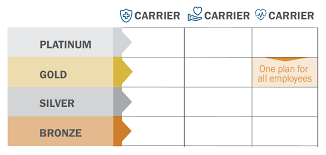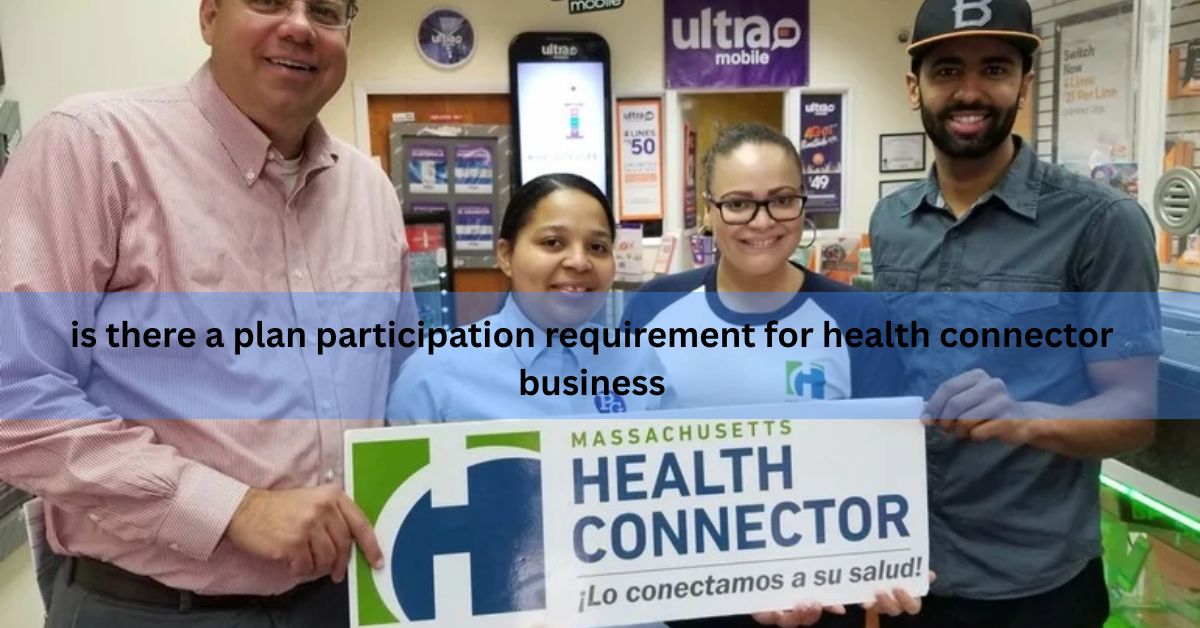Is There A Plan Participation Requirement For Health Connector Business – A Deep Dive!
Massachusetts employers searching for affordable and flexible health insurance options often turn to the Health Connector for Business. It is the state’s health insurance exchange for small businesses and offers a range of plans from major insurers. However, one of the most frequently asked questions by small business owners is: “Is there a plan participation requirement for Health Connector for Business?”
This guide answers that question in depth. We will explore the Health Connector’s approach to plan participation, how it differs from traditional models, and what employers need to know to comply while maximizing their benefits and flexibility. This article also analyzes how plan selection affects employees and the business’s bottom line.
Understanding the Health Connector for Business:
Before addressing plan participation requirements, it’s important to understand what the Health Connector for Business is. It is Massachusetts’ official health insurance marketplace designed specifically for small businesses with 50 or fewer full-time employees. It allows employers to offer coverage through well-known insurers and gives employees the flexibility to choose from a selection of plans.
What sets the Health Connector for Business apart is its flexibility in plan offerings. Employers can select how much to contribute toward employee premiums and allow workers to pick from a range of plan types and networks, depending on what’s available in their region.
What Is a Plan Participation Requirement?

A plan participation requirement typically refers to a rule requiring employers to enroll a certain percentage of their eligible employees in the health insurance coverage they offer. This requirement ensures that a health plan covers a sufficiently diverse group, minimizing risk for the insurer.
In the traditional insurance market, carriers often require that at least 75% of eligible employees participate in the group plan. This is to prevent adverse selection, where only employees who need medical care enroll, increasing the insurer’s risk and costs.
Does the Health Connector for Business Have a Plan Participation Requirement?
Unlike many traditional insurance carriers, the Massachusetts Health Connector for Business does not enforce a strict minimum plan participation requirement. This is a significant departure from standard market rules and offers small businesses greater flexibility.
Businesses using the Health Connector for Business platform are not penalized if some employees decline coverage, as long as they meet basic eligibility and contribution requirements. This feature is particularly beneficial to employers with part-time workers, seasonal staff, or younger employees who may already be on a parent’s or spouse’s health plan.
Employer Flexibility and Employee Choice:
One of the most distinctive features of the Health Connector for Business is its Employee Choice Model, which enables employers to offer multiple plan options from a selected carrier or across carriers (depending on the plan grouping).
Employers can:
- Choose a contribution level (e.g., 50% of a base plan), and
- Select a plan selection method such as a single carrier, single plan, or tiered level of plans.
This model promotes individualized employee choice, which is not typical in the traditional group insurance market. Even if only a portion of employees opt into the coverage, the employer still complies with the system’s rules—there is no minimum percentage of employee participation required under normal circumstances.
Also Read: Does Hawaii Offer Medicaid for Mental Health Coaches in Hawaii – A Complete Guide!
Conditions Where Participation Might Be Reviewed:
Though the Health Connector does not mandate a strict plan participation percentage, there are still guidelines employers must follow. These include:
- The business must be located in Massachusetts.
- The business must have 1–50 full-time equivalent employees.
- The employer must make a minimum contribution toward premiums (often at least 50%).
If an employer applies for coverage and no employees enroll, or if an unusually small number of eligible employees participate, the Connector may flag the application for review to ensure there is no misuse or misunderstanding. However, this is more of a compliance safeguard than a hardline participation rule.
How Contribution Requirements Tie into Participation?
The Health Connector requires that employers pay a minimum share of the monthly premium for each full-time employee. This is usually around 50% of the lowest-cost plan selected by the employer. This financial commitment encourages participation, but again, does not mandate that a certain percentage of employees enroll.
For example, if an employer selects a Silver-tier plan and agrees to cover 60% of the premium, the employee can still choose a higher-tier Gold plan and pay the difference out-of-pocket. This flexibility empowers employees while maintaining employer compliance without forcing participation.
Advantages of No Strict Participation Requirement:
For employers, the lack of a participation mandate offers several advantages:
- Greater flexibility for part-time and contract-heavy teams.
- No pressure to coerce employees into enrolling if they prefer other coverage options.
- Improved morale and employee satisfaction due to customizable plan choices.
- Less risk of plan rejection during enrollment, which can happen in traditional markets if participation levels are too low.
For employees, this model respects individual needs and life circumstances. Someone covered under a spouse’s plan doesn’t have to enroll just to help the employer meet a requirement.
Financial Incentives Through the Connector:

The Health Connector for Business also provides financial incentives to employers in the form of the ConnectWell rebate program. Employers who participate in wellness programs and meet engagement benchmarks may qualify for rebates that effectively reduce premium costs.
This program is independent of how many employees enroll. Thus, businesses can enjoy cost savings and wellness benefits without worrying about participation thresholds.
Real-World Examples: Business Scenarios
Let’s say you run a 10-person bakery in Massachusetts. Five employees already have health insurance through spouses or other jobs. Under a traditional group plan, you might not meet the 75% participation threshold required to offer coverage.
With the Health Connector for Business, this issue disappears. You can offer coverage to all 10, contribute 50% of the premium for those who enroll, and remain fully compliant—even if only three decide to sign up.
In another scenario, a tech startup with remote workers wants to offer flexible, high-quality health coverage. Using the Connector’s Employee Choice Model, they allow staff to pick from several plans that fit different budgets and needs. Participation levels vary, but compliance is not affected.
Should You Worry About Participation Requirements?
If you are using the Health Connector for Business, the short answer is no. There’s no strict rule requiring a set percentage of your employees to enroll in your group plan.
However, you should be mindful of:
- Meeting employer contribution minimums
- Ensuring your employees understand their options
- Staying up to date on any changes in state or federal health regulations
FAQ’s:
1. What is the plan participation requirement for Health Connector for Business?
There is no strict plan participation requirement. Employers can offer health insurance through the Connector even if only a few employees choose to enroll.
2. Do all my employees need to enroll in order to offer coverage?
No. Employees are not required to enroll for an employer to offer coverage. The employer must only meet the required contribution percentage.
3. Can part-time employees be offered coverage?
Yes, although the employer is only obligated to contribute toward full-time employees. Part-timers may be offered coverage at the employer’s discretion.
4. Will I be penalized if only a few employees enroll?
No. There are no penalties for low enrollment under the Health Connector for Business, as long as basic requirements are met.
5. Can I still qualify for small business tax credits?
Yes, if you meet eligibility criteria (fewer than 25 employees, average wages below a certain threshold, and contribution requirements), you may qualify for federal tax credits.
6. Are employees allowed to choose their own plans?
Yes. The Health Connector for Business offers an Employee Choice Model where employees can pick from various plans selected by the employer.
7. Is Health Connector for Business available to all Massachusetts businesses?
It is available to businesses with 50 or fewer full-time equivalent employees located in Massachusetts.
8. What if no employees want the coverage?
Employers can still set up the plan, but if zero employees enroll, the Connector may review the case to ensure proper setup and understanding.
Closing Remarks:
The Health Connector for Business stands out by removing barriers that often complicate group health insurance offerings for small businesses. One of its biggest advantages is the absence of a rigid plan participation requirement, which allows employers to offer health insurance without worrying about how many employees enroll.
Read More:






